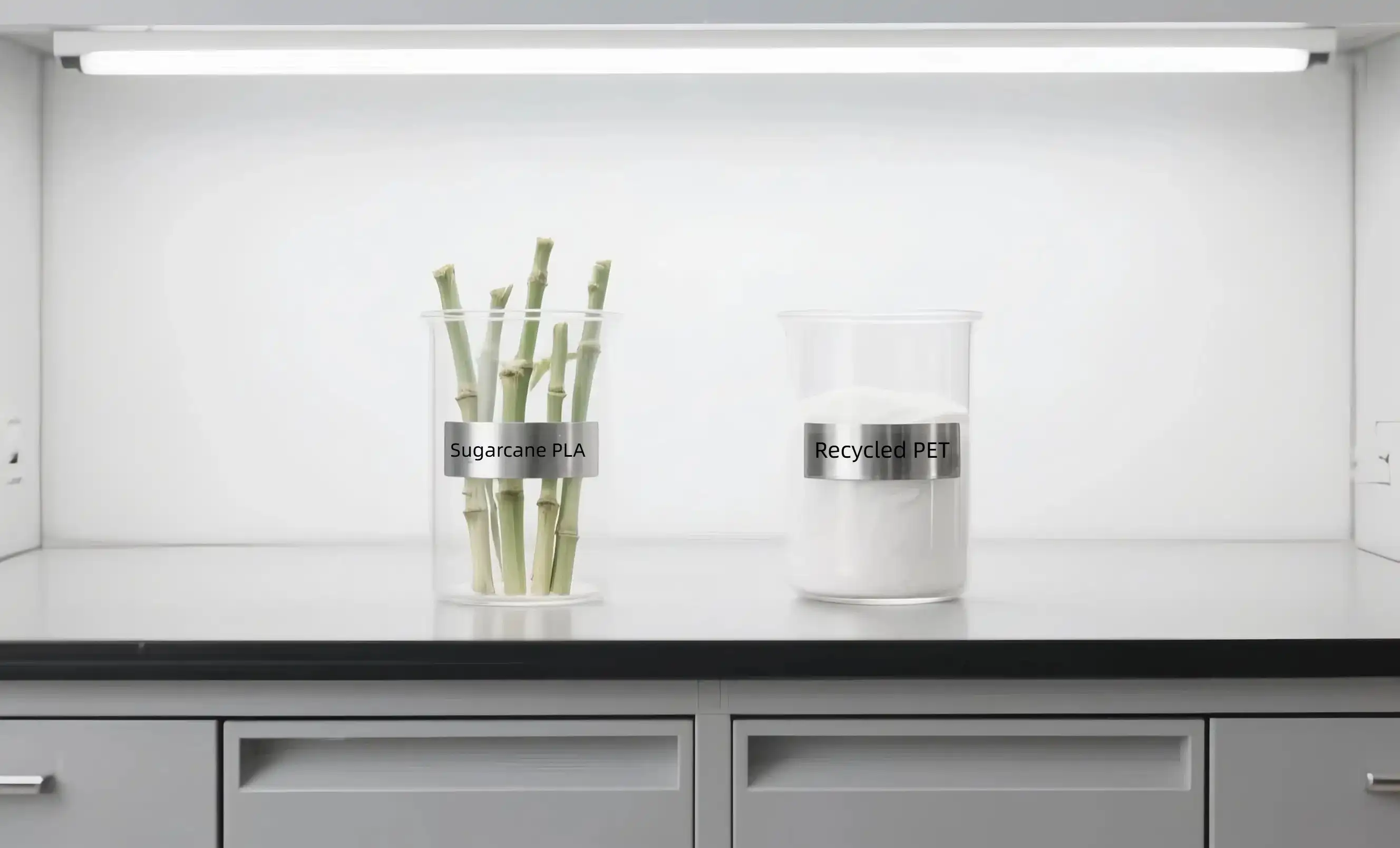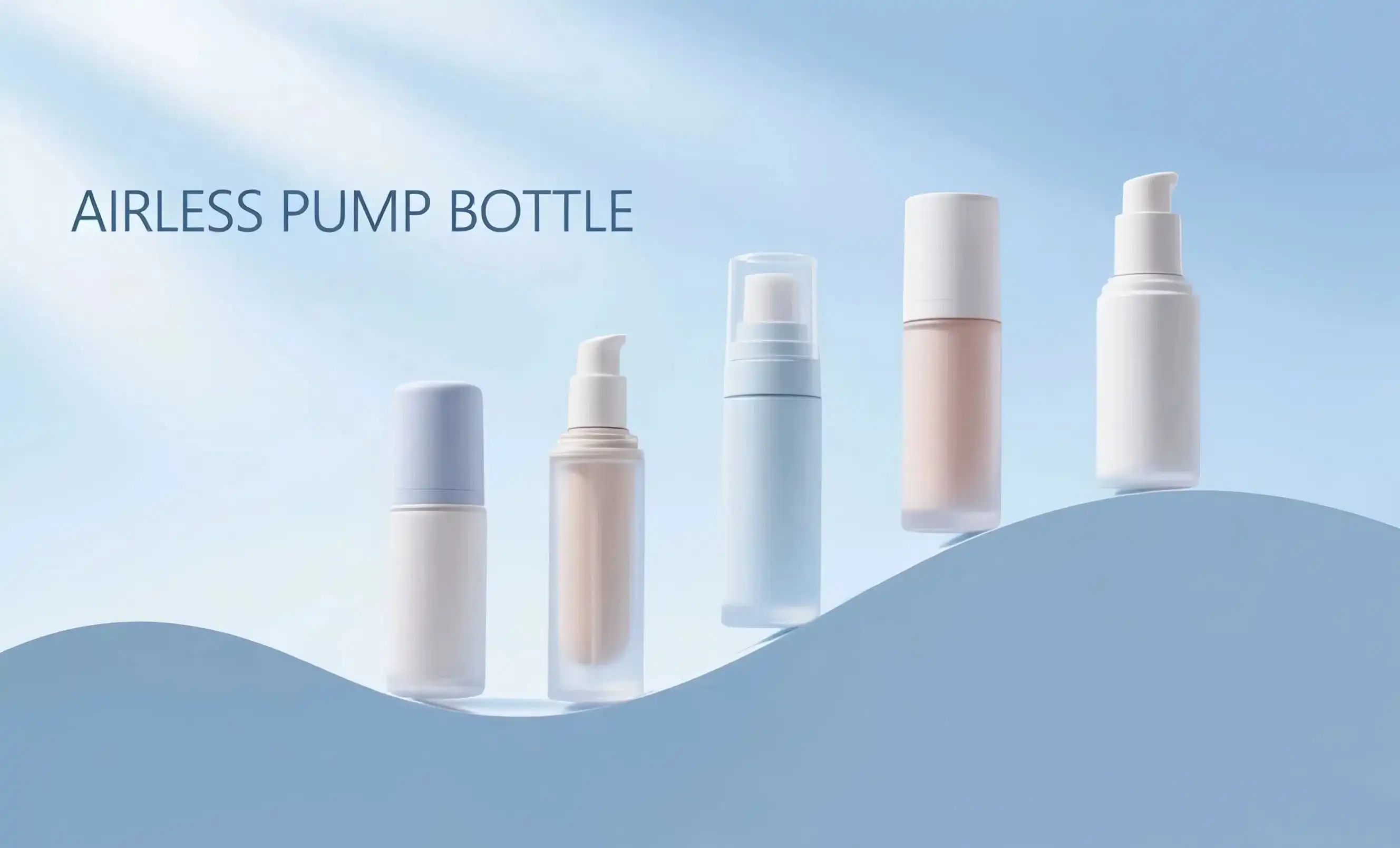Sugarcane PLA vs. recycled PET: Which material is greener?
In the quest for sustainable packaging, two materials have emerged as frontrunners: sugarcane PLA and recycled PET. Both offer significant environmental benefits, but determining which is truly "greener" requires a nuanced understanding of their production processes and lifecycle impacts.

The Case for Sugarcane PLA
Sugarcane PLA, derived from renewable sugarcane, boasts impressive eco-credentials. Its production requires less energy compared to traditional plastics and results in lower greenhouse gas emissions. Additionally, sugarcane PLA is biodegradable under specific conditions, potentially reducing long-term environmental impact.
The Advantages of Recycled PET
Recycled PET, on the other hand, tackles the issue of plastic waste head-on. By repurposing existing plastic, it reduces the demand for virgin materials and keeps plastic out of landfills and oceans. The recycling process for PET is well-established, making it a practical choice for many manufacturers.
When comparing these materials, several factors come into play: - Carbon footprint: Sugarcane PLA generally has a lower carbon footprint during production, but recycled PET saves energy by avoiding the need for new plastic production. - End-of-life considerations: While sugarcane PLA is biodegradable, it requires specific industrial composting facilities. Recycled PET can be recycled multiple times, extending its useful life. - Resource use: Sugarcane PLA relies on agricultural land, which could compete with food production. Recycled PET doesn't require new resources but does need energy for the recycling process. - Performance: Both materials can be used to create durable, high-quality eco-friendly airless bottles, but PET may have a slight edge in terms of versatility and established manufacturing processes.
The "greener" choice between sugarcane PLA and recycled PET often depends on specific circumstances, including local recycling infrastructure, transportation distances, and intended use. In many cases, a combination of both materials might offer the most sustainable solution for eco-conscious brands.
Do plant-based airless bottles compromise durability?
A common concern when considering plant-based materials for airless bottles is whether they can match the durability of traditional plastics. This question is crucial for brands looking to maintain product integrity while pursuing sustainable packaging options.
Advancements in Plant-Based Materials
Recent technological advancements have significantly improved the performance of plant-based materials. Modern plant-based airless bottles can offer comparable durability to their conventional plastic counterparts. Manufacturers have developed blends and processing techniques that enhance the strength, flexibility, and barrier properties of these materials.
Factors Influencing Durability
Several factors contribute to the durability of plant-based airless bottles: - Material composition: Many plant-based bottles use a combination of bio-based and conventional materials to optimize performance. - Manufacturing process: Advanced molding and treatment processes can improve the structural integrity of plant-based bottles. - Product compatibility: Certain formulations may interact differently with plant-based materials, necessitating careful matching of product to packaging. - Environmental conditions: Plant-based materials may respond differently to extreme temperatures or humidity, requiring consideration in storage and transportation.
While early iterations of plant-based packaging may have faced durability challenges, current options can meet or exceed industry standards. Many brands have successfully implemented plant-based airless bottles without compromising product protection or shelf life.
Real-World Performance
Numerous beauty and skincare brands have adopted plant-based airless bottles with positive results. These eco-friendly airless bottles have proven capable of withstanding the rigors of shipping, storage, and consumer use. In many cases, customers report no noticeable difference in the performance or longevity of products packaged in plant-based materials.
As the technology continues to evolve, the durability gap between plant-based and conventional materials is narrowing. Brands considering the switch to plant-based airless bottles can now do so with confidence, knowing that they're not sacrificing product integrity for sustainability.
BPA-free plastics vs. biodegradable alternatives: Pros & cons
The choice between BPA-free plastics and biodegradable alternatives for eco-friendly airless bottles presents a complex decision for brands committed to sustainable packaging. Both options offer distinct advantages and challenges, making it essential to weigh their respective pros and cons carefully.
BPA-Free Plastics: A Safer Option
Pros: - Eliminates concerns about BPA leaching into products - Durable and resistant to breakage - Widely accepted in recycling programs - Maintains product integrity over long periods Cons: - Still derived from non-renewable petroleum sources - May contain other chemicals of concern - Not biodegradable - Contributes to plastic pollution if not properly recycled
Biodegradable Alternatives: Reducing Long-Term Impact
Pros: - Made from renewable resources - Breaks down naturally, reducing long-term environmental impact - Helps reduce dependence on fossil fuels - Aligns with consumer preferences for "natural" products Cons: - May have shorter shelf life or stability issues with certain products - Requires specific conditions to biodegrade properly - Can be more expensive to produce - May contaminate plastic recycling streams if not properly sorted
Finding the Right Balance
The ideal choice between BPA-free plastics and biodegradable alternatives depends on various factors: - Product requirements: Consider the stability, shelf life, and protection needs of the product. - Brand values: Align packaging choices with overall sustainability goals and brand image. - Consumer expectations: Meet customer demands for both safety and environmental responsibility. - Regulatory compliance: Ensure packaging meets all relevant safety and environmental regulations. - Disposal infrastructure: Consider the availability of recycling or composting facilities in target markets.
Many brands are finding success with hybrid approaches, combining the benefits of both materials. For example, using biodegradable materials for outer packaging and BPA-free plastics for inner components that require greater durability and product protection.
As technology advances, the distinctions between these options may become less pronounced. Innovative materials that offer the safety of BPA-free plastics with the environmental benefits of biodegradable alternatives are already in development, promising even more sustainable options for eco-friendly airless bottles in the future.
Conclusion
The journey towards truly sustainable packaging is ongoing, with plant-based materials and BPA-free options both playing crucial roles. As we've explored, each material offers unique benefits and challenges in the creation of eco-friendly airless bottles. The ideal solution often involves a thoughtful combination of materials, tailored to specific product needs and brand values.
For brands committed to sustainability without compromising on quality, Topfeelpack offers cutting-edge solutions in eco-friendly airless packaging. Our advanced bottles are designed to prevent air exposure, maintaining product effectiveness and ensuring longer shelf life. We understand the importance of sustainable materials, energy efficiency, and waste reduction in today's market.
Whether you're a high-end skincare brand, a trendy makeup line, or a DTC beauty company, Topfeelpack has the expertise to meet your specific needs. Our fast customization process can deliver new products in just 30-45 days, with competitive pricing and quick delivery within 3-5 weeks. We provide custom solutions that align with your brand image and market trends while meeting strict environmental regulations.
Ready to elevate your packaging to the next level of sustainability and functionality? Contact us at pack@topfeelgroup.com to learn more about our innovative eco-friendly airless bottles and how we can support your brand's commitment to sustainability and quality.
References
- Johnson, A. (2023). "Sustainable Packaging in the Beauty Industry: A Comprehensive Review." Journal of Cosmetic Science, 74(2), 145-160.
- Smith, B., & Brown, C. (2022). "Comparative Life Cycle Assessment of Plant-Based and BPA-Free Plastic Packaging." Environmental Science & Technology, 56(8), 4712-4723.
- Garcia, M. et al. (2023). "Advancements in Biodegradable Polymers for Cosmetic Packaging." Green Chemistry, 25(10), 3456-3470.
- Thompson, R. (2022). "Consumer Perceptions of Eco-Friendly Packaging in Personal Care Products." Journal of Consumer Behaviour, 21(3), 289-302.
- Lee, S., & Park, J. (2023). "Innovations in Airless Pump Technology for Sustainable Cosmetic Packaging." Packaging Technology and Science, 36(5), 678-691.
- Wilson, E. (2022). "Regulatory Landscape for Sustainable Packaging Materials in the Global Cosmetics Market." International Journal of Cosmetic Science, 44(4), 412-425.

 - 副本_1745399213966.webp)

_1747827716538.webp)

